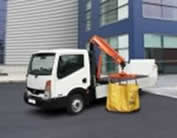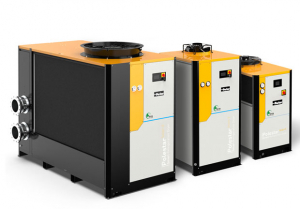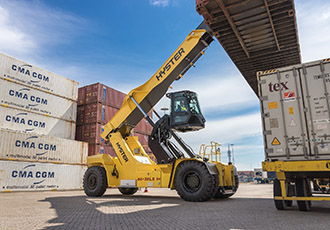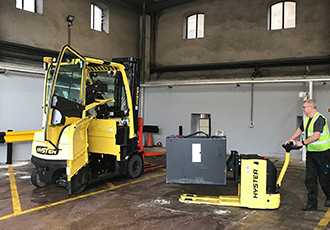Safety Stats Point To Benefits Of Cranes
13th September 2011
Source:
Penny Hydraulics Ltd

The latest statistics from the HSE, for the year ending April 2010, expose yet again the need to avoid manual handling and give more credence to calls for wider use of vehicle mounted cranes and other load handling devices. The figures show that across all industries thirty one percent of all fatal, serious and over-three-day injuries during the last reporting year were related to manual handling. This represents 37000 people whose lives have been directly affected.
In the motor transport sector the story is even worse, with 38% of all reportable injuries related to manual handling. So while handling related injuries are significant in all industries the road transport has even more work to do to improve its safety record. The simplest and most effective way to reduce the risk of this type of injury is to eliminate the need for manual handling by changing the processes involved and providing employees with suitable load handling equipment.
Across all industries a further 30% of all reportable injuries were caused by slips, trips and falls on the same level and 9% to falls from any height. In road transport these figures were 24% and 11% respectively and include falls from delivery and service vehicles. Incidents like this can be avoided by removing the need to approach or climb on a vehicle. Provision of appropriate load handling equipment is one possible solution.
While there may be a temptation to think that injuries are not going to happen there is another way of looking at the HSE figures: an accident or injury caused by manual handling or a slip, trip or fall is much more likely than one caused by fire or electric shock which have historically been taken far more seriously.
When anyone is injured, or worse, at work it is not just the individual that suffers. Countless more family members, friends, colleagues and employers will also be affected. Moreover, employers have a legal duty of care to their employees and must provide them with the correct equipment and training to do their jobs safely.
Often the simplest way to reduce the risk of an accident and resulting injury is to remove the potential cause. Providing employees with a crane on their vehicles is a good place to start. Manufacturers such as Penny Hydraulics continue to play their part by adding new features that promote safety and make it easier for operators to specify and install their products.
A recent trend in crane manufacture is to incorporate full hydraulic control for all but the lightest units. Hydraulic control of boom lifting and lowering as well as slew (sideways movement) and rotation helps ensure smooth and precise load handling with reduced risk of the sudden and unexpected movements that can cause accidents to users and bystanders. These features are now widely available on cranes with maximum working load from 500kg upwards such as the Penny Hydraulics FV500 and larger models. The use of proportional controls, another recent innovation on smaller cranes, helps to ensure movements follow the amount the levers are depressed which promotes even greater precision and safety.
Remote controls are also becoming more popular. These are especially useful from a safety point of view because they reduce the need for operators to climb on their vehicles. Instead users stand well away from the vehicle and load when handling is in progress. Two types of control are generally available. The first is attached to the crane by a length of cable known as a wander lead while the second is a wireless device that provides the user with complete autonomy to stand in any position with the best all-round view of the working area. Both are offered as no-cost options on the range of Penny Hydraulics SwingLift cranes.
Another trend in crane design is to remove weight without compromising on performance and safety. During the last year or so Penny Hydraulics has used its in-house advanced CAD and finite element analysis tools to re-engineer its range to reduce weight through optimised design and use of alternative materials which replace some steel components with lighter alloys. Operators can now install one of these devices with reduced impact on the overall vehicle weight to leave more carrying capacity for improved operational flexibility and productivity. Although this helps with all types of vehicle it is especially useful for those in the 3.5t and 7.5t classes where remaining within the overall weight and carrying capacity limits are always of concern to operators.
Across all industries a further 30% of all reportable injuries were caused by slips, trips and falls on the same level and 9% to falls from any height. In road transport these figures were 24% and 11% respectively and include falls from delivery and service vehicles. Incidents like this can be avoided by removing the need to approach or climb on a vehicle. Provision of appropriate load handling equipment is one possible solution.
While there may be a temptation to think that injuries are not going to happen there is another way of looking at the HSE figures: an accident or injury caused by manual handling or a slip, trip or fall is much more likely than one caused by fire or electric shock which have historically been taken far more seriously.
When anyone is injured, or worse, at work it is not just the individual that suffers. Countless more family members, friends, colleagues and employers will also be affected. Moreover, employers have a legal duty of care to their employees and must provide them with the correct equipment and training to do their jobs safely.
Often the simplest way to reduce the risk of an accident and resulting injury is to remove the potential cause. Providing employees with a crane on their vehicles is a good place to start. Manufacturers such as Penny Hydraulics continue to play their part by adding new features that promote safety and make it easier for operators to specify and install their products.
A recent trend in crane manufacture is to incorporate full hydraulic control for all but the lightest units. Hydraulic control of boom lifting and lowering as well as slew (sideways movement) and rotation helps ensure smooth and precise load handling with reduced risk of the sudden and unexpected movements that can cause accidents to users and bystanders. These features are now widely available on cranes with maximum working load from 500kg upwards such as the Penny Hydraulics FV500 and larger models. The use of proportional controls, another recent innovation on smaller cranes, helps to ensure movements follow the amount the levers are depressed which promotes even greater precision and safety.
Remote controls are also becoming more popular. These are especially useful from a safety point of view because they reduce the need for operators to climb on their vehicles. Instead users stand well away from the vehicle and load when handling is in progress. Two types of control are generally available. The first is attached to the crane by a length of cable known as a wander lead while the second is a wireless device that provides the user with complete autonomy to stand in any position with the best all-round view of the working area. Both are offered as no-cost options on the range of Penny Hydraulics SwingLift cranes.
Another trend in crane design is to remove weight without compromising on performance and safety. During the last year or so Penny Hydraulics has used its in-house advanced CAD and finite element analysis tools to re-engineer its range to reduce weight through optimised design and use of alternative materials which replace some steel components with lighter alloys. Operators can now install one of these devices with reduced impact on the overall vehicle weight to leave more carrying capacity for improved operational flexibility and productivity. Although this helps with all types of vehicle it is especially useful for those in the 3.5t and 7.5t classes where remaining within the overall weight and carrying capacity limits are always of concern to operators.
Similar articles
More from Penny Hydraulics Ltd
- Highway safety improved as companies unite together 19th April 2017
- Chandelier maintenance swings into Birmingham Cathedral 22nd November 2016
- Engineers needed to make sure UK stays ahead of competitors 20th July 2016
- Penny Hydraulics new crane range makes light work of heavy lifting 12th March 2015




.jpg)







Write a comment
No comments